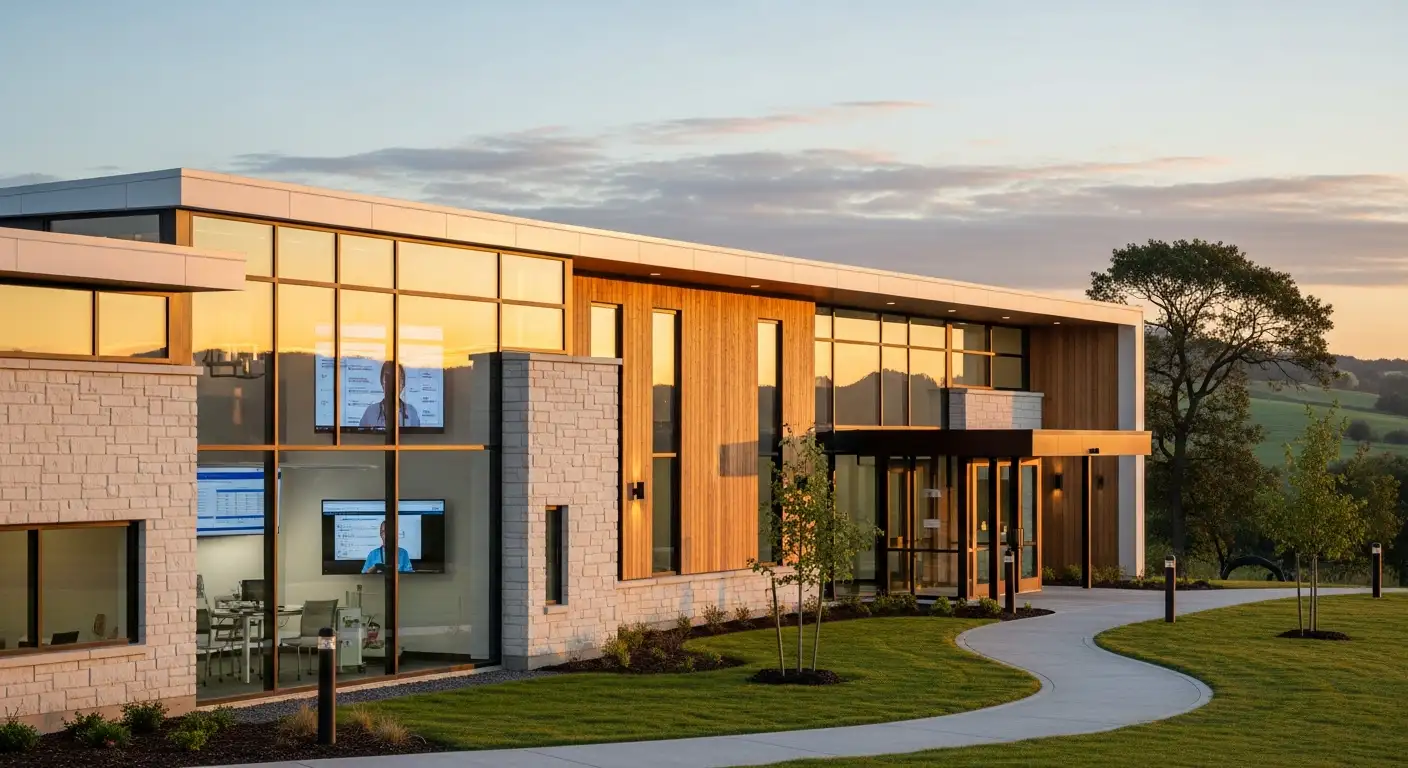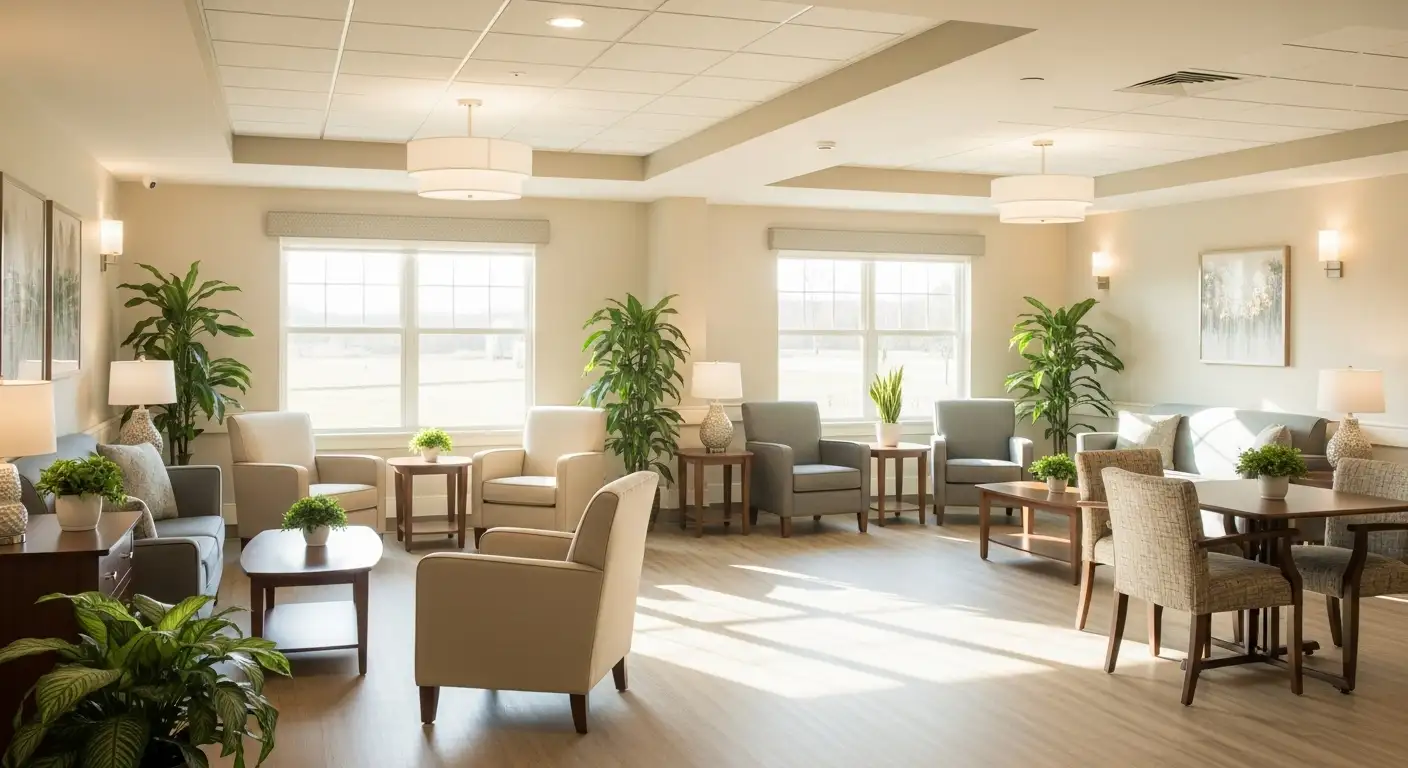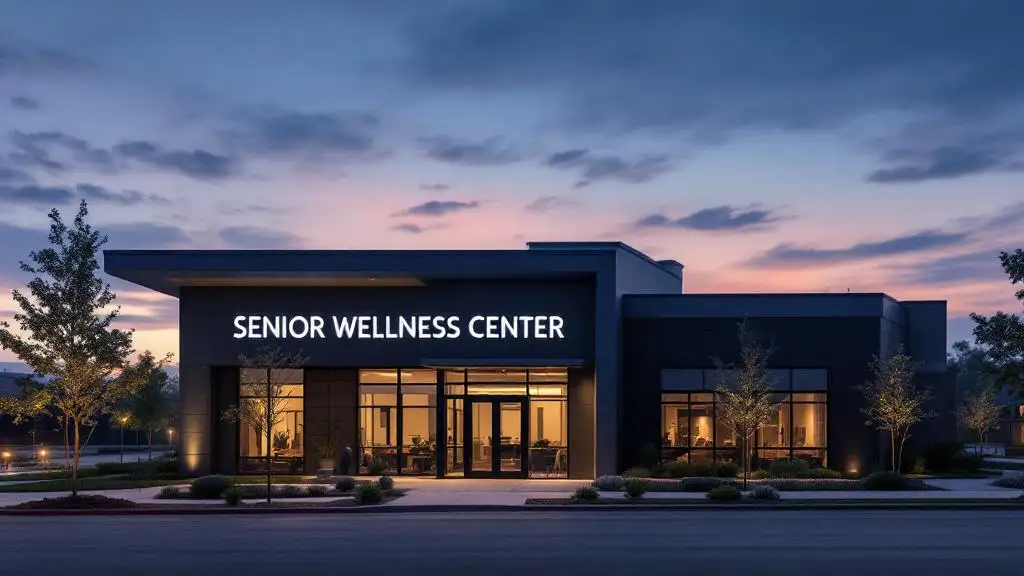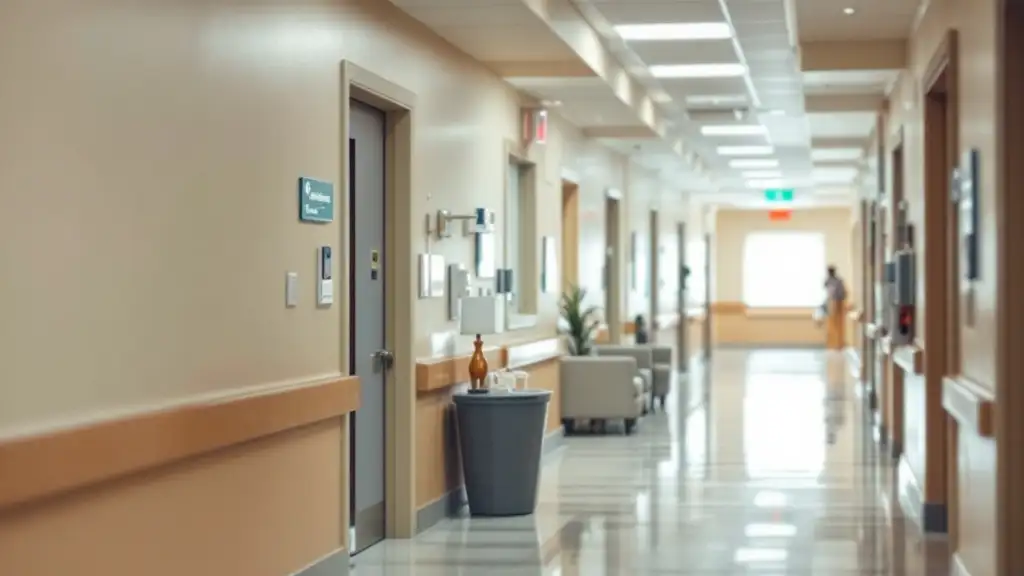Understanding the Challenges and Solutions for Seniors in Care Facilities
Moving into a facility-based living environment presents unique challenges for older adults, especially those coping with substance use disorders and mental health issues. This article explores how comprehensive therapy and tailored treatment programs can help seniors adjust to these transitions, safeguard their wellbeing, and promote sustained recovery and quality of life.
The Prevalence and Complexity of Substance Use Disorders in Older Adults

How Common Are Substance Use Disorders Among Older Adults?
Substance use disorders (SUDs) affect about 1 in 11 adults aged 60 and over as of 2022, marking an increase in recent years. This growing trend highlights the need for greater awareness and intervention among this population.
Which Substances Are Most Often Misused?
Alcohol remains the most commonly misused substance by older adults, followed by cannabis. Notably, cannabis use among seniors rose sharply—by 75% between 2015 and 2018—largely motivated by attempts to manage medical issues like pain, sleep disorders, anxiety, and depression.
What Factors Heighten the Risk of Substance Misuse in Older Adults?
Several physiological and social factors converge to increase older adults' vulnerability to substance misuse:
- Physiological Changes: Aging alters the body's ability to process substances, increasing susceptibility to medication interactions, falls, cognitive decline, and other adverse effects.
- Social Challenges: Older adults frequently face bereavement, forced retirement, chronic health problems, and social isolation. These stressors can trigger or exacerbate substance misuse.
Together, these complexities make it crucial to consider both medical and social contexts when addressing substance use in seniors. Routine screening is especially important since symptoms of misuse may be mistaken for normal aging or medical conditions.
Physiological Changes and Their Impact on Substance Use in Older Adults

How aging impacts processing of substances like alcohol and cannabis
As people age, their bodies undergo physiological changes that affect how substances like alcohol and cannabis are processed. Aging slows metabolism and alters liver and kidney function, which means substances stay in the body longer. This slower processing increases the sensitivity of older adults to the effects of alcohol and drugs, raising the likelihood of intoxication and adverse reactions.
For example, alcohol's impact can be amplified due to decreased water content in the body and changes in body fat composition, causing higher blood alcohol concentrations even when consuming smaller amounts. Similarly, cannabis effects can be more pronounced because aging affects the endocannabinoid system, and higher THC levels in modern strains also pose greater risks.
Increased risks such as medication interactions, falls, and cognitive decline
Older adults are particularly vulnerable to multiple risks when using substances. One major concern is drug interactions since many older adults take prescription medications for chronic conditions. Alcohol and cannabis can interfere with these medications, reducing effectiveness or causing harmful side effects.
Moreover, substance use increases risks of falls due to impaired balance and coordination, which is especially dangerous for seniors prone to fractures and other injuries. Cognitive decline is another significant risk; both alcohol misuse and cannabis use have been linked to memory problems, confusion, and worsening mental health, potentially accelerating dementia symptoms.
Overall, the combination of aging-related physiological changes and substance use calls for cautious management and tailored interventions to mitigate these heightened risks in older adults.
Recognizing Substance Use Disorders in Seniors Through Routine Screening

Why Is Routine Screening Important in Older Adults?
Routine screening for substance use disorders in seniors is crucial because many older adults experience substance misuse that often goes undetected. Early identification through screening can prevent worsening health outcomes by addressing misuse promptly. This is especially important since substance use disorder in adults over 60 was found in about 1 in 11 individuals in 2022, indicating a significant prevalence that may be underestimated without proper screening.
How Are Symptoms Often Misdiagnosed?
Symptoms of substance use disorder in older adults are frequently mistaken for common medical problems or normal aging effects. For example, signs such as confusion, falls, memory issues, and mood changes might be attributed to aging, dementia, or chronic illnesses instead of substance misuse. This misdiagnosis contributes to many cases of substance misuse remaining untreated in this population.
Additional Challenges
Physiological changes that come with aging modify how the body processes substances like alcohol and medications, increasing risks of adverse effects. Consequently, these changes complicate clinical presentations, making screening even more essential to differentiate substance-related symptoms from other medical conditions.
Best Practices for Screening
Healthcare providers are encouraged to incorporate routine screening tools and assessments specifically validated for older adults, which can help identify at-risk individuals early. Screening should be a part of regular health evaluations to ensure ongoing monitoring of substance use, enabling timely interventions that can improve recovery outcomes.
Comprehensive Treatment Services: An Integrated Approach to Address Addiction and Mental Health
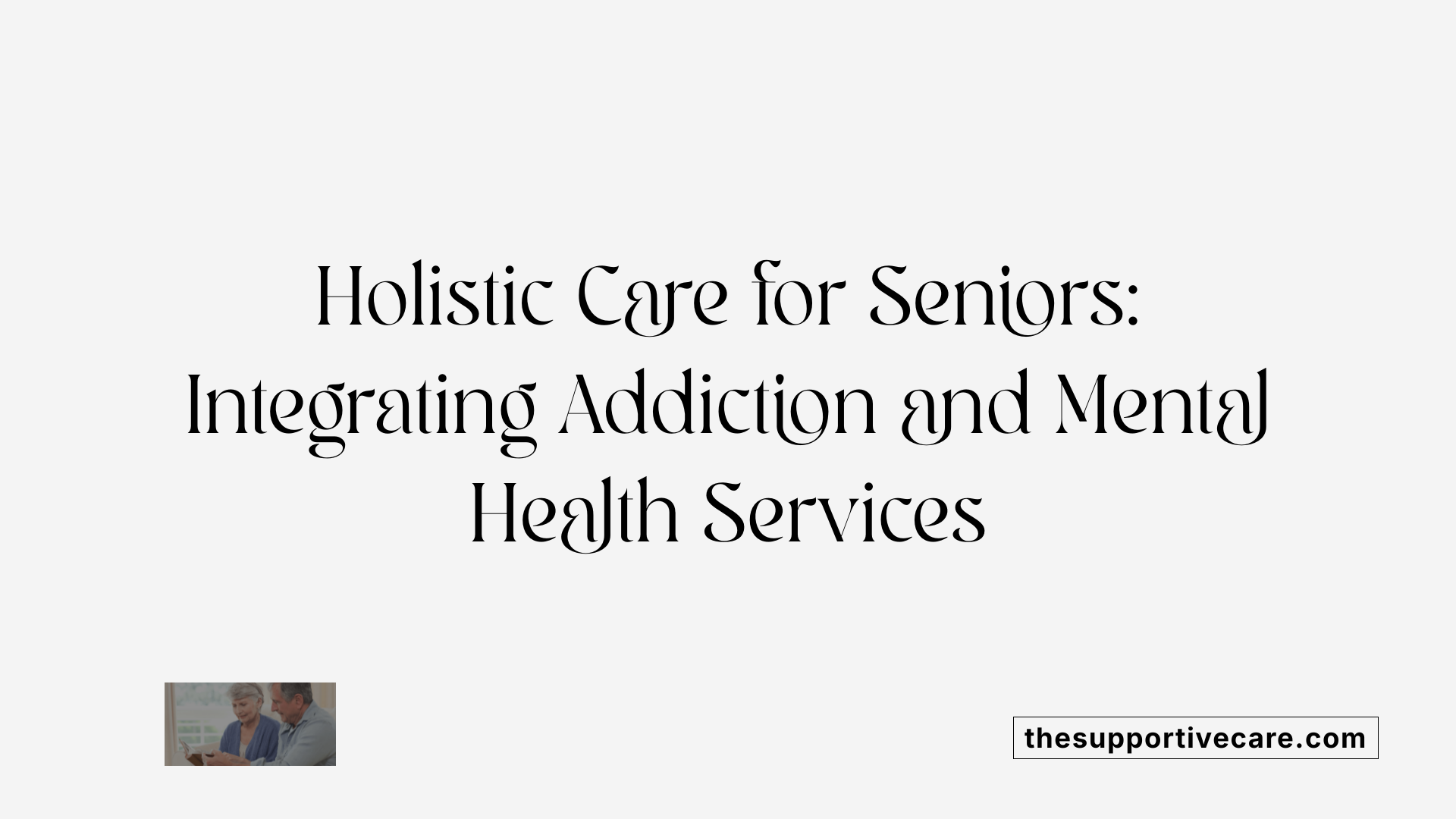
What are comprehensive treatment services for substance abuse and mental health issues?
Comprehensive treatment services holistically address substance abuse and mental health together. They combine medical, psychological, and social interventions tailored to the unique needs of each individual. The goal is sustained recovery, improved quality of life, and prevention of relapse.
Medical Interventions Such as Detox and Medication Management
Medical care often begins with detoxification to safely manage withdrawal symptoms. Medication-assisted treatment (MAT) plays a crucial role, using FDA-approved drugs like methadone, buprenorphine, and naltrexone to reduce cravings and support recovery from opioid and alcohol use disorders. Continuous medication monitoring helps manage co-occurring chronic health conditions common in older adults.
Psychological Therapies Including Counseling and Behavioral Modification
Behavioral therapies, including cognitive-behavioral therapy (CBT), motivational interviewing (MI), and motivational enhancement therapy (MET), help modify harmful behaviors and improve coping skills. Counseling allows patients to explore emotional and psychological factors driving substance use and mental health challenges, fostering long-term behavioral change.
Social Supports Including Family Therapy and Community Resources
Social support is essential for recovery. Family therapy strengthens relationships and communication, while peer support groups like Alcoholics Anonymous (AA) or Narcotics Anonymous (NA) offer community and mutual encouragement. Case management connects individuals to resources addressing social determinants like transportation and housing, which influence treatment success.
Tailored Treatment Plans with Case Management and Ongoing Monitoring
Treatment plans are customized to reflect each patient’s history, strengths, and life circumstances. A multidisciplinary team including psychiatrists, psychologists, addiction counselors, social workers, and primary care physicians coordinates care. Regular monitoring and aftercare planning help sustain recovery and address challenges proactively.
This integrated approach recognizes the complexity of addiction and mental health in aging adults, addressing physical, emotional, and social factors to improve outcomes and quality of life.
Personalized Treatment Plans for Various Forms of Addiction Among Seniors
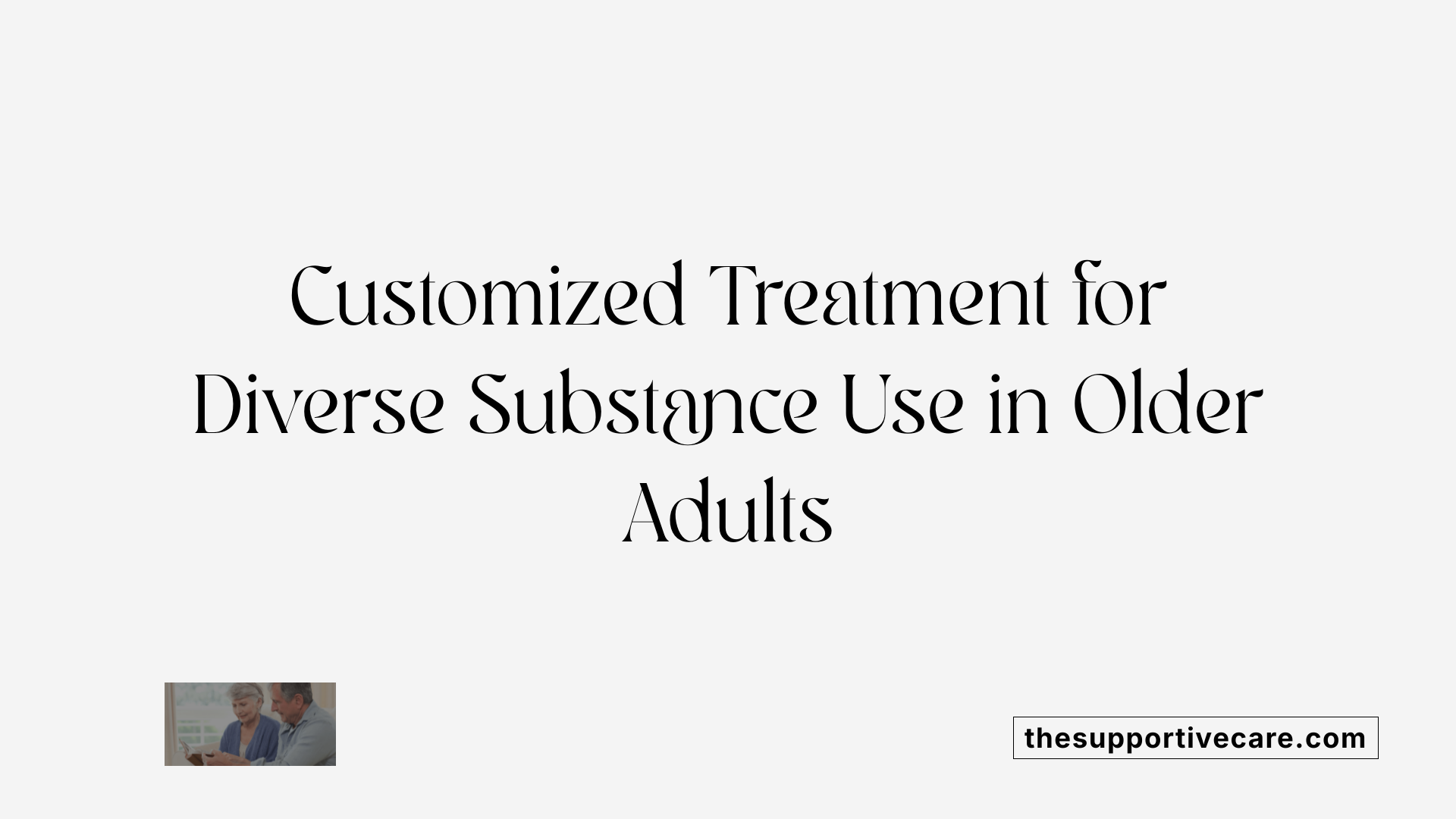
How do treatment programs address various forms of addiction?
Treatment programs for older adults customize plans based on the type of addiction and individual needs. They incorporate multiple settings, including outpatient, inpatient, partial hospitalization, and residential rehab, to provide the right level of care.
Settings: outpatient, inpatient, partial hospitalization, residential rehab
- Outpatient: Older adults attend therapy sessions and medication management while living at home, allowing for daily routines.
- Inpatient: Intensive, 24-hour care in a facility, suitable for severe addiction or medical complications.
- Partial hospitalization: A middle ground with structured daytime treatment and home rest at night.
- Residential rehab: Long-term care in a supportive environment promoting sustained recovery.
Use of therapies like CBT, motivational interviewing, family involvement
Behavioral therapies such as cognitive behavioral therapy (CBT) and motivational interviewing help seniors develop coping skills and motivation for change. Family involvement is encouraged to strengthen social support and improve treatment outcomes.
Medications such as methadone, buprenorphine, naltrexone for opioid and alcohol addictions
Medication-assisted treatment (MAT) includes approved drugs like methadone, buprenorphine, and naltrexone, which reduce cravings and withdrawal symptoms. These medications are effective for opioid and alcohol use disorders among older adults.
Role of recovery groups, sober living, and aftercare
Peer support groups like Alcoholics Anonymous (AA) and Narcotics Anonymous (NA) provide social connectivity and accountability. Sober living environments help transition from treatment to independent living. Aftercare planning ensures ongoing monitoring and relapse prevention.
This comprehensive and personalized approach addresses the diverse needs of seniors, enhancing recovery success and quality of life.
The Rise of Cannabis Use Among Older Adults and Associated Risks

Trends in Cannabis Use Increase for Medical Motives
Cannabis use among older adults has risen sharply, increasing by 75% between 2015 and 2018. This notable trend is mainly fueled by medical motives rather than recreational use. Many older adults turn to cannabis as a means to manage health challenges common in later life.
Medical Concerns Such as Pain Relief, Sleep Issues, Anxiety, Depression
The primary medical reasons driving cannabis use in this age group include pain relief, sleep disturbances, anxiety, and depression. These conditions often complicate aging, and some older adults seek cannabis as an alternative or complement to traditional treatments to improve quality of life.
Risks Due to Higher Potency THC and Emergency Room Visits
However, cannabis use in older adults carries risks. Modern cannabis strains typically have higher THC levels, increasing the risk of adverse effects such as overdose. Correspondingly, there has been a rise in emergency room visits linked to cannabis use among seniors. These risks highlight the need for careful monitoring and education when considering cannabis for medical purposes in older populations.
Dual-Diagnosis Treatment: Addressing Co-occurring Mental Health and Substance Use Disorders
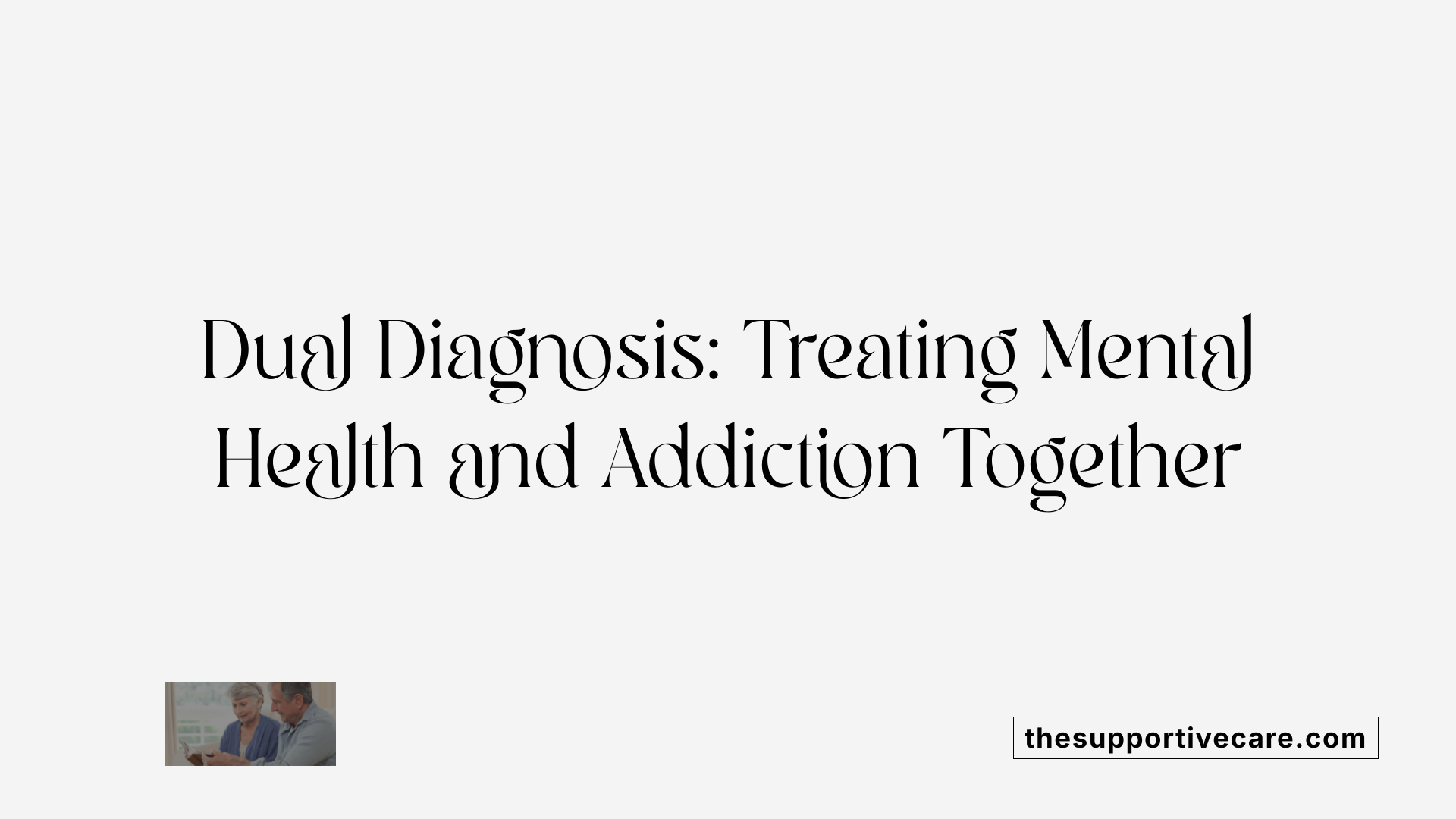
How common are co-occurring mental health and substance use disorders among older adults?
About 20% of aging adults experience mental health issues, while 8-10% have substance use problems. These rates demonstrate a significant overlap of co-occurring disorders in seniors, highlighting the importance of addressing both conditions simultaneously.
Why is specialized integrated dual-diagnosis treatment important for older adults?
Older adults often face unique challenges such as age-related physiological changes, medication interactions, and social isolation. Traditional treatment systems frequently lack age-friendly integration of medical, psychiatric, and social services tailored for seniors. Integrated dual-diagnosis treatment combines mental health and addiction services into a cohesive, coordinated approach, improving outcomes by addressing all aspects of a senior’s wellbeing in one place.
What evidence-based interventions are effective for dual-diagnosis treatment in seniors?
Several proven approaches effectively manage co-occurring disorders in older adults:
- Cognitive Behavioral Therapy (CBT): Helps seniors change harmful thought patterns and behaviors linked to both mental illness and substance misuse.
- Medication-Assisted Treatment (MAT): Utilizes FDA-approved medications like methadone, buprenorphine, and naltrexone to ease withdrawal symptoms and cravings, particularly for opioid and alcohol use disorders.
- Motivational Interviewing (MI): Enhances motivation to engage in treatment and foster behavioral change.
How do multidisciplinary teams support integrated treatment?
Successful dual-diagnosis care relies on teams that include psychiatrists, psychologists, addiction counselors, social workers, and primary care physicians. Together, they provide holistic, patient-centered care that can address complex health needs unique to older adults.
These specialized, evidence-based treatments significantly improve recovery chances for older adults facing the dual challenge of mental health and substance use disorders.
Building a Multidisciplinary Team to Support Seniors in Facility-Based Therapy

Roles of Psychiatrists, Psychologists, Addiction Counselors, Social Workers, and Primary Care Physicians
A highly effective team for treating older adults with substance use disorders combines the expertise of various healthcare professionals. Psychiatrists manage psychiatric medications and diagnose co-occurring mental health conditions. Psychologists provide psychotherapy, such as cognitive-behavioral therapy, to address behavioral patterns linked to addiction. Addiction counselors specialize in motivational interviewing and relapse prevention strategies, guiding patients through recovery. Social workers help navigate social services, coordinate care, and provide emotional support. Primary care physicians oversee overall medical health, monitor medications, and manage chronic diseases common in older adults.
Holistic Patient-Centered Care Approach
Treatment plans are tailored to respect the autonomy and unique life stage of seniors. This holistic approach integrates physical health, mental health, and social needs, ensuring a comprehensive recovery journey. It addresses the challenges of aging-related physiological changes, medication interactions, and cognitive decline while honoring personal goals and preferences.
Supportive Services: Case Management, Transportation, and Peer Support
To promote treatment adherence and address social determinants of health, supportive services are essential. Case management coordinates appointments, resources, and follow-up care. Transportation assistance facilitates access to treatment facilities, especially for those with limited mobility or social isolation. Peer support programs offer camaraderie and encouragement from individuals with lived experience, reducing feelings of loneliness and fostering sustained recovery among older adults.
Overcoming Barriers to Treatment Access in Skilled Nursing and Postacute Care Facilities
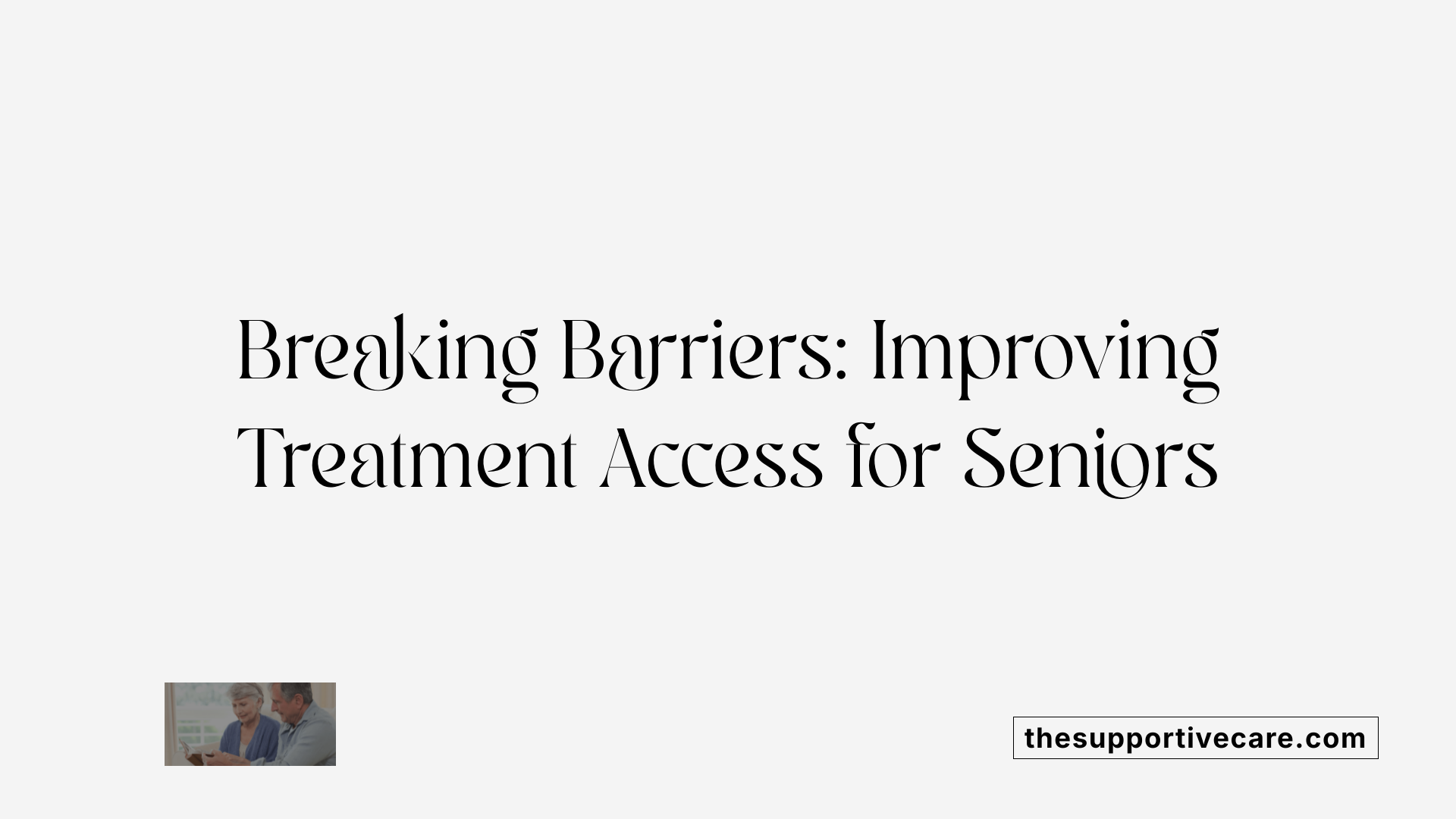
What barriers do older adults face in skilled nursing and postacute care?
Older adults with substance use disorders often encounter significant stigma when seeking treatment in skilled nursing facilities or postacute care settings. This stigma can contribute to reluctance or denial of access to needed services. Besides social stigma, regulatory hurdles also impede treatment access; strict institutional policies sometimes prohibit the use of evidence-based medications like methadone, buprenorphine, and naltrexone within these care environments.
Institutional barriers include lack of specialized programs designed for older adults and insufficient integration between addiction treatment and medical or psychiatric services. These gaps in care coordination limit the ability to provide holistic, age-appropriate treatment.
How have COVID-19 regulatory changes impacted treatment accessibility?
The COVID-19 pandemic prompted temporary regulatory adjustments allowing for expanded use of telemedicine to monitor medication-assisted treatment remotely. This shift has increased access to addiction treatment by overcoming geographical and mobility challenges common among seniors.
Telemedicine offers older adults a convenient, less intimidating way to engage with providers, which can improve adherence to treatment plans. There is a growing advocacy to make such regulatory modifications permanent to ensure ongoing improved access.
What policy actions can reduce restrictions and improve access?
Policymakers should prioritize reducing restrictive regulations that limit medication access in skilled nursing and postacute care settings. Removing these barriers would enable facilities to provide FDA-approved treatments effectively and safely.
Similarly, policies fostering integration of medical, psychiatric, and addiction services tailored specifically to older adults would improve outcomes. Supporting training programs to reduce stigma among providers in these care settings is also essential.
Overall, advancing regulatory flexibility, promoting telemedicine, and implementating age-friendly care models can significantly improve treatment accessibility for aging adults struggling with substance use disorders in nursing and postacute care environments.
Holistic and Complementary Therapies to Support Senior Recovery

Types of Alternative Therapies for Older Adults
Holistic therapies offer diverse options that complement traditional substance use disorder treatments for older adults. Common alternative therapies include:
- Equine Therapy: Engaging with horses to promote emotional healing and stress reduction.
- Art and Music Therapy: Using creative expression to enhance mood, process emotions, and reduce anxiety.
- Yoga: Combining physical movement and breathing exercises to improve flexibility, balance, and relaxation.
- Mindfulness: Cultivating present-moment awareness to manage cravings, reduce stress, and improve mental clarity.
These therapies provide accessible, non-pharmacologic tools tailored to the needs and capacities of senior individuals.
Benefits of Integrating Holistic Approaches With Traditional Treatment
Incorporating holistic therapies alongside evidence-based treatments, like cognitive behavioral therapy and medication-assisted treatment, can significantly enhance recovery outcomes. Holistic methods support emotional wellness and complement behavioral strategies by:
- Reducing anxiety and depression symptoms common in older adults with substance use disorders.
- Offering gentle ways to reduce stress, which may trigger relapse.
- Encouraging physical activity and social engagement that improve overall health.
Together, they promote a more patient-centered and comprehensive approach addressing the multiple dimensions of wellness.
Enhancing Coping Skills, Emotional Wellness, and Resilience
Holistic therapies foster critical skills such as emotional regulation, mindfulness, and stress management, which are essential for sustaining long-term recovery. They:
- Build resilience by helping seniors recognize and navigate aging-related stressors and trauma.
- Promote emotional balance through creative outlets and mindfulness practices.
- Support adaptive coping mechanisms that replace substance misuse behaviors.
By strengthening these areas, holistic approaches empower older adults to pursue meaningful recovery aligned with their life stage and personal strengths.
Social Support Networks: A Crucial Factor in Successful Senior Recovery
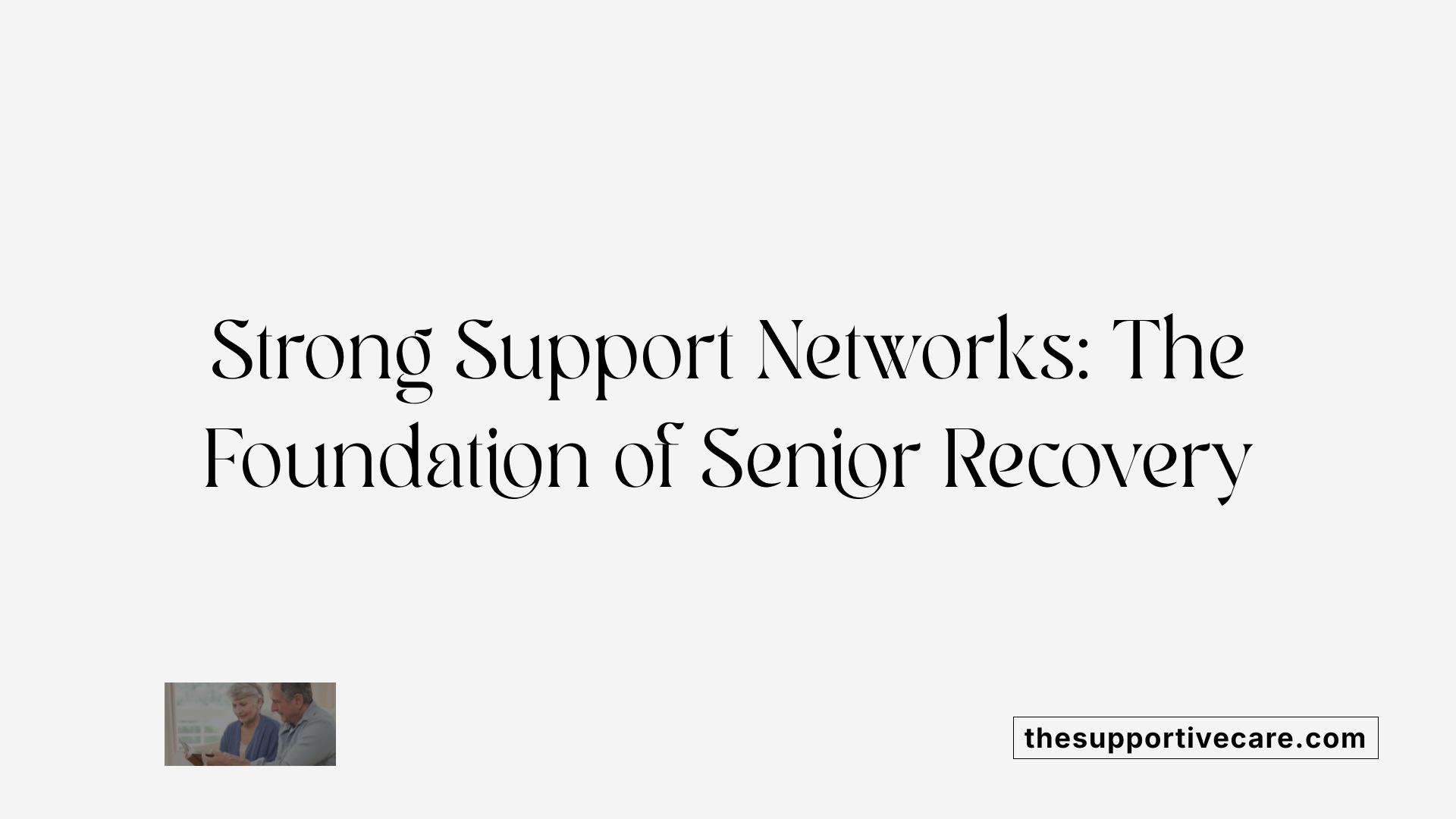
How does social isolation impact health and addiction risks among older adults?
Social isolation is a significant concern for older adults, often exacerbating risks of depression, cognitive decline, and engagement in risky behaviors, including substance misuse. Isolation can lead to poor health outcomes and increases the likelihood of relapse in recovery from substance use disorders. The lack of social connections deprives seniors of emotional and practical support crucial during recovery.
Why are family, friends, mutual-help groups, and spiritual supports important for recovery?
Older adults benefit greatly from a diverse network of social supports. Family and friends provide emotional encouragement and assist with daily needs, while mutual-help groups like Alcoholics Anonymous (AA) and Narcotics Anonymous (NA) offer peer understanding and accountability. Spiritual or religious communities also create a sense of belonging and purpose, which can motivate sustained recovery efforts. These combined supports foster resilience and prevent feelings of loneliness.
What assessment tools are used to evaluate social support in older adults?
Tools such as the Lubben Social Network Scale (LSNS-6) specifically assess the size, closeness, and frequency of contacts in a senior’s social circle, helping identify those at risk due to poor connectivity. The Health Enhancement Lifestyle Profile (HELP) evaluates broader aspects of wellness, including social dimensions, offering a holistic view of a senior’s support system and health behaviors. These assessments inform tailored interventions to strengthen social ties.
What strategies help strengthen social connections and reduce isolation?
Effective strategies include engaging family members and neighbors in support roles, involving peer recovery specialists for relatable guidance, and utilizing online platforms to maintain connection despite physical barriers. Programs that promote community engagement, relationship education, and wellness activities like yoga and mindfulness further enhance emotional and social wellness. Addressing loneliness directly by expanding instrumental and informational support networks can significantly improve recovery outcomes for seniors.
Promoting Long-Term Recovery Through Aftercare and Relapse Prevention

What Are the Goals of Long-Term Monitoring and Community Support?
Long-term recovery for older adults with substance use disorders focuses on sustained mental health, relapse prevention, and improved quality of life. Ongoing monitoring helps detect early signs of relapse, while community support offers social connectivity and shared resources. These supports work together to maintain recovery gains and foster a sense of belonging.
How to Identify and Manage Relapse Risk Factors?
Older adults face distinct relapse risks, including chronic pain, mental health symptoms like depression and anxiety, and social isolation. Recognizing these triggers early is crucial. Interventions may include managing chronic conditions medically, providing behavioral therapy for mood disorders, and enhancing social engagement through peer groups and family involvement.
Why Is Collaborative and Realistic Goal Setting Important?
Goal setting in recovery is most effective when it involves collaboration between the patient and healthcare providers. Realistic and individualized goals acknowledge the person's history, strengths, and current life situation. This tailored approach empowers older adults, respects their autonomy, and increases motivation for sustained recovery efforts.
How Does Emphasizing Resilience and Coping Support Recovery?
Recovery support includes building resilience by addressing aging-related challenges such as loss, trauma, and changing health. Strengthening coping skills through therapies like cognitive behavioral therapy or mindfulness helps older adults handle stress and avoid relapse. Recognizing and adapting to developmental stages reinforces a positive recovery outlook.
Integrating these strategies enhances the long-term success of treatment among seniors by addressing their unique psychosocial and physiological needs.
Creating Age-Friendly, Integrated Facility-Based Treatment Systems
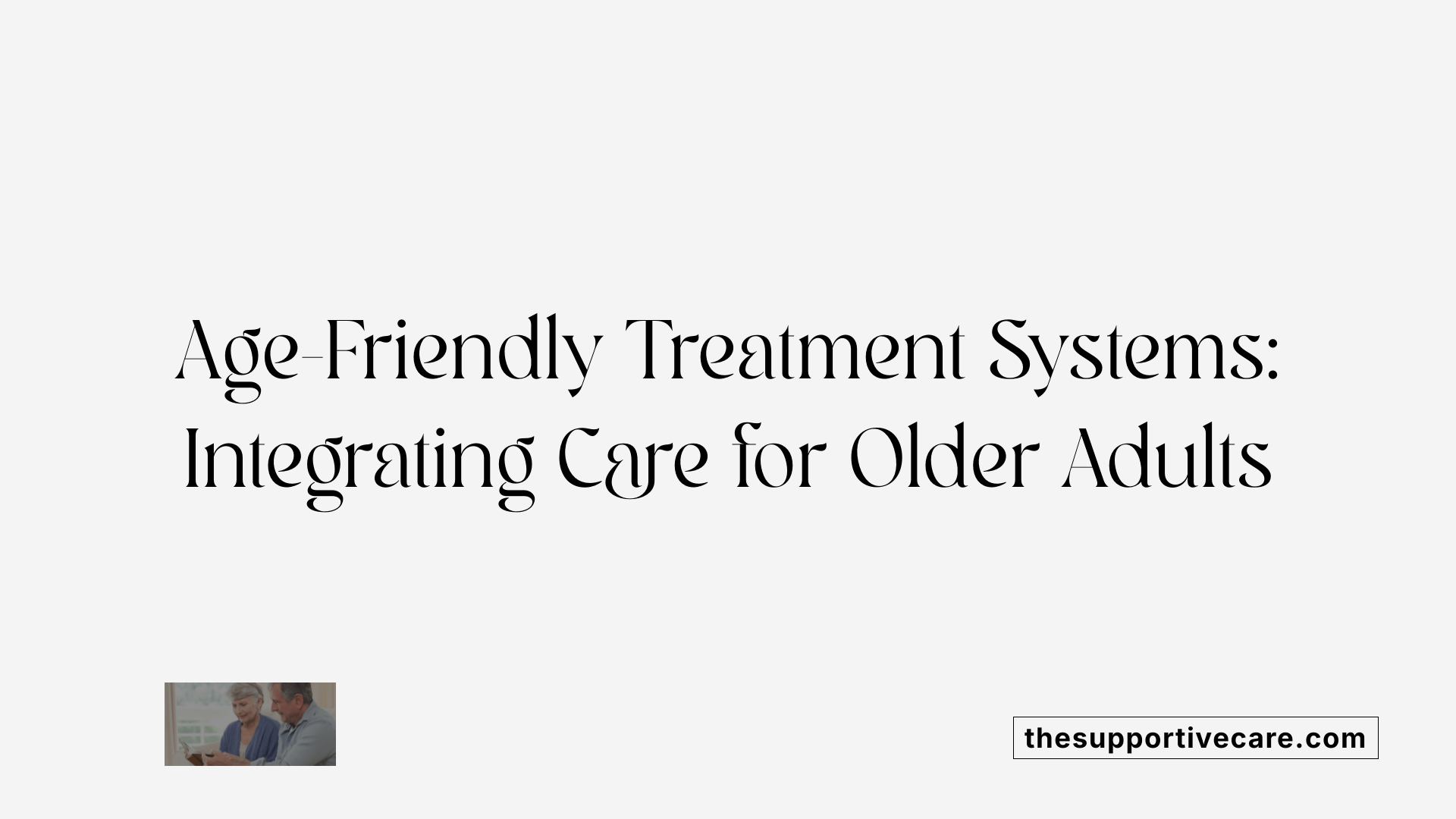
Why is there a need for integration of medical, psychiatric, and social services tailored to older adults?
Older adults seeking treatment for substance use disorder often have complex needs that span medical issues, mental health conditions, and social challenges. Physiological changes associated with aging, chronic diseases, and common co-occurring disorders like depression and anxiety require comprehensive care. Tailoring services specifically to aging adults improves treatment relevance and effectiveness, addressing both physical health and psychosocial factors to support recovery.
What are the current gaps in traditional treatment systems for older adults?
Traditional addiction treatment programs frequently lack age-appropriate approaches and fail to provide integrated services. Many are not equipped to address the combination of medical, psychiatric, and social needs that older adults face. Additionally, barriers such as stigma, regulatory restrictions, and limited access in postacute care and skilled nursing facilities reduce treatment uptake. Older adults may also struggle with programs designed primarily for younger populations, resulting in suboptimal engagement.
How do coordinated care models benefit treatment adherence and outcomes?
Coordinated care models that integrate medical, psychiatric, and addiction services into a single, patient-centered system enhance engagement and continuity of care. Collaboration among multidisciplinary teams—including psychiatrists, addiction counselors, primary care providers, and social workers—ensures holistic support. Such integration facilitates tailored treatment plans, addresses social determinants like transportation and peer support, reduces relapse risk, and leads to improved outcomes comparable or superior to younger cohorts. Telemedicine innovations, especially since COVID-19, have also improved access by allowing remote monitoring and medication management.
These age-friendly, integrated facility-based treatment systems are essential to effectively address the rising demand for substance use disorder treatment among older adults. They enable better management of complex health profiles, reduce barriers, and promote sustained recovery through comprehensive support.
The Growing Demand and Future Directions for Senior Substance Use Disorder Treatment

Rising prevalence and harms among older adults
Substance use disorder among adults over 60 has become increasingly prevalent, with 1 in 11 older adults affected in 2022. Over the last two decades, unintentional drug overdoses in this age group surged by nearly 700%, reaching over 30,000 cases. Alcohol remains the most misused substance, followed by cannabis, whose use rose by 75% between 2015 and 2018 mainly for medical purposes.
Demographic shifts increasing treatment demand
The aging population and increasing substance misuse trends forecast a substantial rise in treatment demand for older adults. Both lifelong substance use and new onset due to mental health problems, stressors like bereavement, and medication misuse contribute to this surge. These demographic changes necessitate tailored approaches to effectively manage and treat substance use disorders in seniors.
Implications for healthcare infrastructure and policy
Traditional treatment systems lack age-friendly integration of medical, psychiatric, and social services, posing challenges to older adults seeking care. Additionally, regulatory and institutional barriers limit access to medication-assisted treatments and admission to skilled nursing or post-acute care facilities. Policymakers are urged to reduce restrictions that hinder medication access and enhance specialized, coordinated care models to better serve this vulnerable population.
Innovation in treatment approaches and telemedicine
The COVID-19 pandemic accelerated the adoption of telemedicine for medication monitoring, which has potential to improve access for seniors if made permanent. Integrating behavioral therapies like cognitive behavioral therapy with medication-assisted treatment and incorporating supportive services ensures holistic care. Future directions emphasize multidisciplinary teams, evidence-based interventions, and leveraging technology to optimize outcomes for older adults facing substance use disorders.
Empowering Seniors Through Tailored Therapy in Facility Living
Supporting older adults through their transition into facility-based living with thoughtfully tailored therapy programs is essential to addressing their unique mental health and substance use challenges. A comprehensive, multidisciplinary approach that integrates medical care, evidence-based behavioral therapies, social support, and policy reforms can create an age-friendly environment that promotes adjustment, recovery, and overall wellbeing. By recognizing seniors' individual needs and fostering supportive social networks, facilities can help seniors maintain autonomy, build resilience, and achieve sustainable long-term recovery.
References
- Treating substance misuse in older adults
- Integrating Mental Health Support and Addiction Treatment ...
- To Care For Older Adults With Substance Use Disorder ...
- Therapy For Substance Abuse Treatment
- Chapter 7—Social Support and Other Wellness Strategies for ...
- What Types of Addiction Treatment are Available?
- Substance Use Disorder (SUD): Symptoms & Treatment







